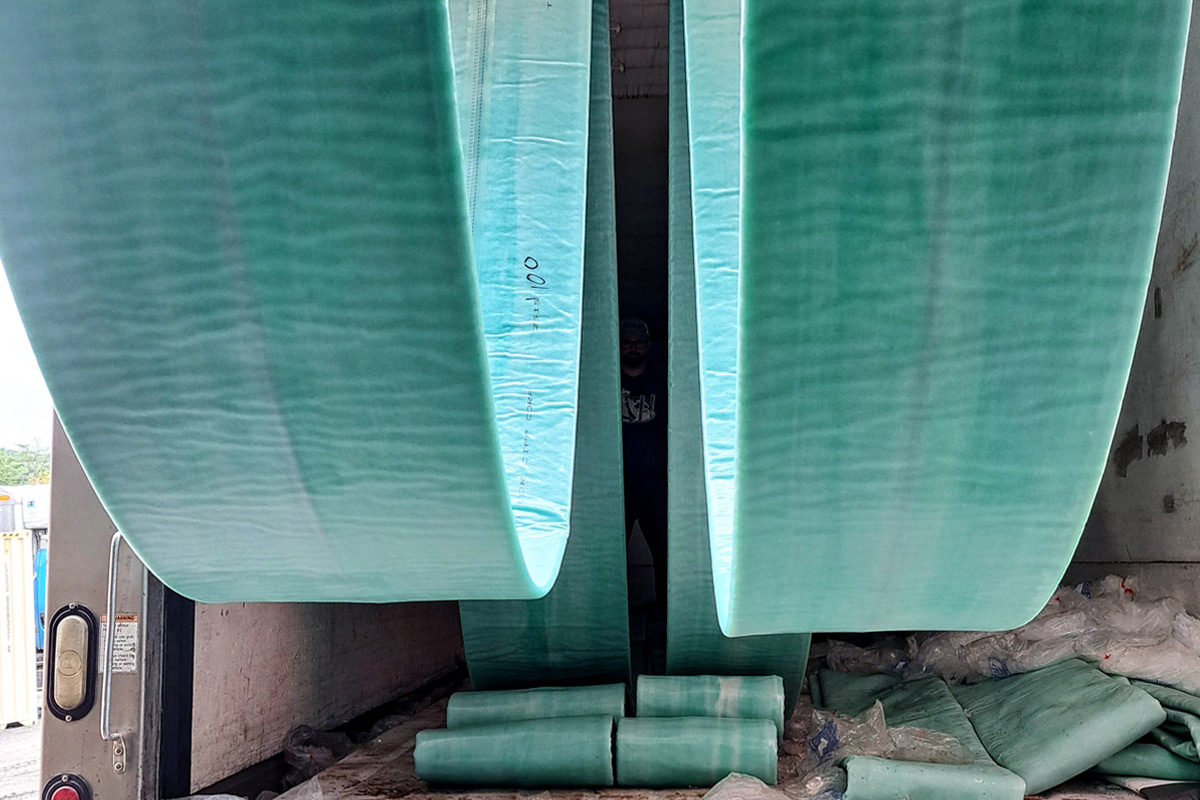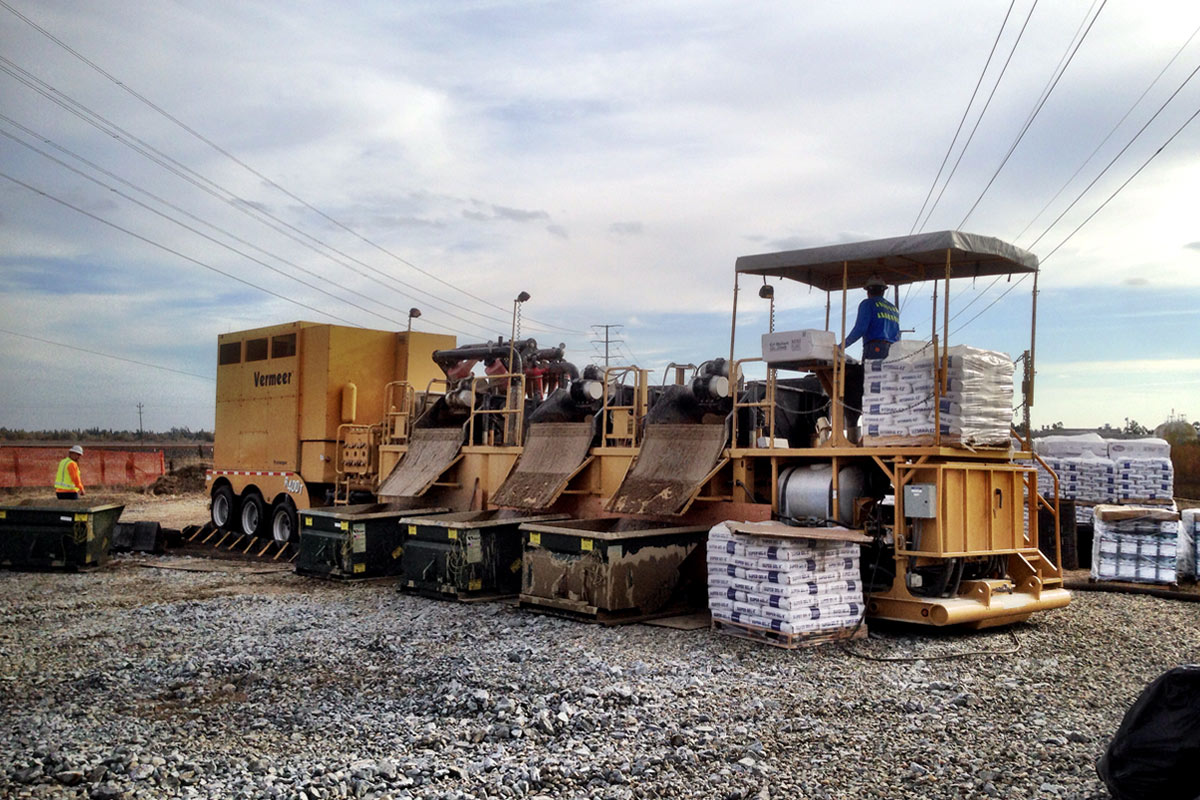
CUIRE Research Update on Spray-Applied Pipe Linings as a Structural Renewal for Gravity Storm Water Conveyance Conduits
Since last December, a group of researchers from the Center for Underground Infrastructure Research and Education (CUIRE) at the University of Texas at Arlington have been developing design methodologies for the use of spray-applied pipe linings for structural applications in renewal of culverts and drainage structures.
The team includes several partner companies: Structurepoint Inc., Columbus, Ohio; LEO Consulting LLC, Chesterfield, Missouri; and Rehabilitation Resource Solutions LLC, Columbus, Ohio. The project is funded through the National Cooperative Highway Research Program (NCHRP).

RELATED: University of Texas at Arlington Research Team Completes CIPP Study Review
The design of a pipeline renewal system involves:
1) Identification of pipe conditions and problem recognition and classification
2) Prioritization of problem considering strategies and long-term plans
3) Selection of an appropriate pipeline renewal method
4) Designing renewal methods based on project specific conditions
5) Implementation and monitoring.
The key factor in current design guidelines is whether the existing pipe is structurally sound enough to continue to carry the earth, live and hydrostatic loads imposed on it. It is well known that existing flexible pipes gain structural strength through the soil-structural interaction, thus making them a composite system. There are many documented instances of existing corrugated metal pipes with significant invert loss that continue to hold their shape due to the load carrying capacity of the surrounding soil.
If the existing pipe is structurally sound enough to continue to maintain shape and carry the earth and live loads imposed on it then several internal lining techniques might be applicable, including sliplining, cured-in-place pipe (CIPP), spray-applied pipe lining (SAPL), and close-fit pipe (CFP). It is important to note that any lining technique used must be preceded by restoration of the surrounding soil integrity. Voids in the embedment or invert must be completely filled to restore the strength provided by the soil.
RELATED: The Challenge of Rehabbing a Twin Culvert Structure in Chesapeake, Ohio
The thickness and strength of the internal liner in this case is required to be sufficient to resist only the hydrostatic loads imposed by the groundwater table. Although these methods are designed to increase the structural load carrying capacity of the existing pipe, they do resist continued structural deterioration and they maintain the soil-structure interaction composite system. The linings are required to resist the live loads and dead loads. However, the dead loads are calculated in similar manner to what is required in a steel tunnel liner plate structure as per AASHTO LRFD Bridge Design Specifications, Section 12.13. Consequently, the linings noted above are designed as semi-structural renewal methods.
If a pipe is deteriorated to the point from where it cannot continue to carry the earth loads and live loads imposed on it, it will lose its shape and collapse. The collapse may be catastrophic or it may occur over an extended time, depending on the rate of surrounding backfill loss. Renewal methods applied at this stage are designed to serve as standalone structures.
Methods such as panel lining, sliplining, CIPP or CFP might be appropriate, but the wall thickness of the new pipe will be thicker than in the case described previously, and the installer must assure that the surrounding soil strength is restored otherwise subsidence of the soil may occur after the renewal method is completed. The existing pipe has to maintain hydraulic capacity, which will further limit renewal at this stage due to reduced cross sectional area.
If hydraulic capacity cannot be assured, the new pipe can, under certain conditions, be replaced by in-line replacement techniques, such as pipe bursting or hand tunneling. Another renewal method is “invert concrete field paving” for corroded corrugated metal pipes (CMPs). If none of the trenchless renewal methods can be employed (e.g., because of shape, soil voids and localized collapse, alignments, size, joint settlements, hydraulic capacity problems), the pipe might have to be replaced using a parallel line installed by the trenchless construction methods. In some cases, a combined number of different trenchless renewal methods or even a combination of open-cut and trenchless method might be considered. The latter approach would be considered when the surface disruption associated with conventional open-cut technique could be tolerated.
Background
To reduce emergency projects and impacts to the traveling public, departments of transportation (DOTs) can use SAPLs to renew deteriorated gravity storm water conveyance conduits and culverts provided they are discovered prior to loss of soil-structure interaction. The American Association of State Highway Transportation Officials (AASHTO) National Transportation Product Evaluation Program (NTPEP) developed a Technical Committee for Spray-Applied Pipe Liners in an effort to implement this new technology. The SAPL Task Committee (TC) consists of DOTs, manufactures of resin-based material, and manufactures of cementitious-based materials. An early request from the DOT members was to ensure that the spray-applied lining functioned as a structural liner. However, it was quickly realized that no standardized structural design methodology existed for this technology. Manufacturers utilize different design methodologies with some using the CIPP ASTM 1216 methodology and others using various classical analytical structural design equations developed for other purposes. A gap in knowledge was identified and preliminary discussions for research among the SAPL TC members were formed.
RELATED: Trenchless Profile: A Look at Queen’s University’s NASTT Student Chapter
The research needs statement was posted through Ohio DOT’s Research Program, and the National Cooperative Highway Research Program (NCHRP) and CUIRE was selected. The objective of this project is to develop design methodologies and equations for structural application of SAPL for circular pipe and pipe arch shapes with span larger than 36 in. The funding commitment was achieved by DelDOT, FDOT, MnDOT, NCDOT, NYSDOT, Ohio DOT, and PennDOT led by Ohio DOT. Other DOTs are encouraged to join this pooled project to expand this research to particular needs of their states.
Final contracting details were worked out late 2017 and the project started in December. Data collected via the SAPL NTPEP program will be incorporated into the pooled funded research project in addition to field and laboratory testing via the research project. The development of practical spray-applied structural culvert pipe linings could be of enormous benefit to the DOTs. Such linings could be a key strategy in extending service life and managing the future burden expected from the aging network of culverts and storm sewers. Compared to other culvert rehabilitation systems, SAPLs promise greater cost effectiveness and less community disruptions.
 Objectives and Methodology
Objectives and Methodology
The primary objective of this two-year research is to develop design equations for structural renewal of gravity storm water conveyance culverts using spray-applied pipe linings for both cementitious and resin-based materials and for circular and non-circular shapes. These design equations developed with this project will use loading as detailed in the AASHTO’s Load and Resistance Factor Design (LRFD) Bridge Design Specifications and will be applicable for round and arch shapes. All parameters of the host culvert that may impact the design thickness such as vertical or horizontal deflections, unsymmetrical racking, section loss, cracks, material geometry (corrugations), or protrusions such as bolts and flanges will be considered. Additionally, practical limitations on the use of these design equations will be included.
The methodology for this research includes:
• A database of all the previous projects and experiences with SAPLs,
• Literature search to minimize amount of laboratory testing and field inspections,
• Review of CIPP design equations,
• Laboratory and soil box testing to develop and validate structural design equations with circular and arch shapes and various thicknesses,
• Field data collections of SAPL installations for participating DOTs,
• Impacts of corrugations on SAPLs,
• Survey of U.S. DOTs and Canadian agencies,
• Life cycle cost analysis,
• Computational modeling, and
• Performance construction specifications.
DOTs and Vendors are Invited to Participate!
To participate in this unique project, DOTs and vendors can contact Mr. Jeffrey Syar, P.E., administrator, Ohio DOT Office of Hydraulic Engineering, Phone: 614-275-1373, Email: Jeffrey.Syar@dot.ohio.gov; or Dr. Mo Najafi, P.E., Phone: 817-272-9177, Email: najafi@uta.edu, the principal investigator for this project.
Jeffrey E. Syar, P.E., is administrator at Ohio DOT Office of Hydraulic Engineering.





